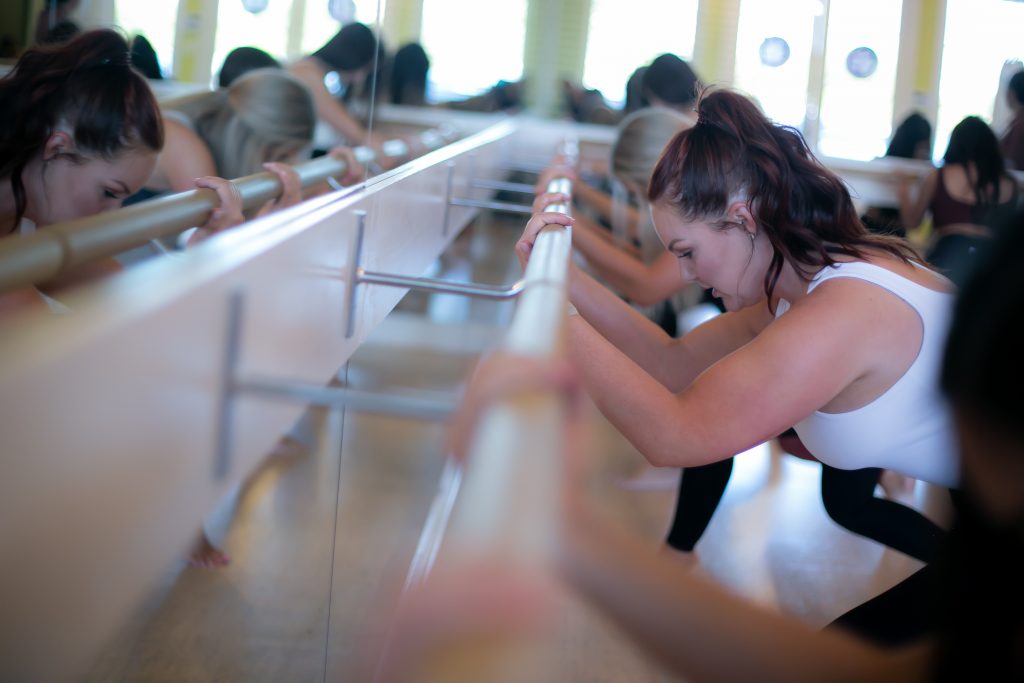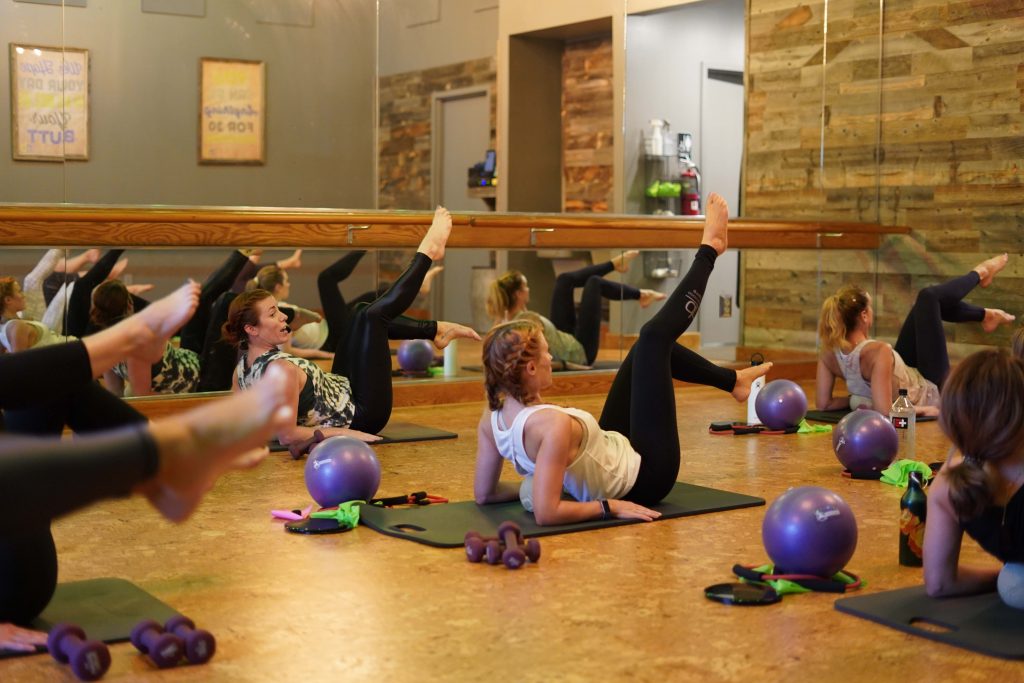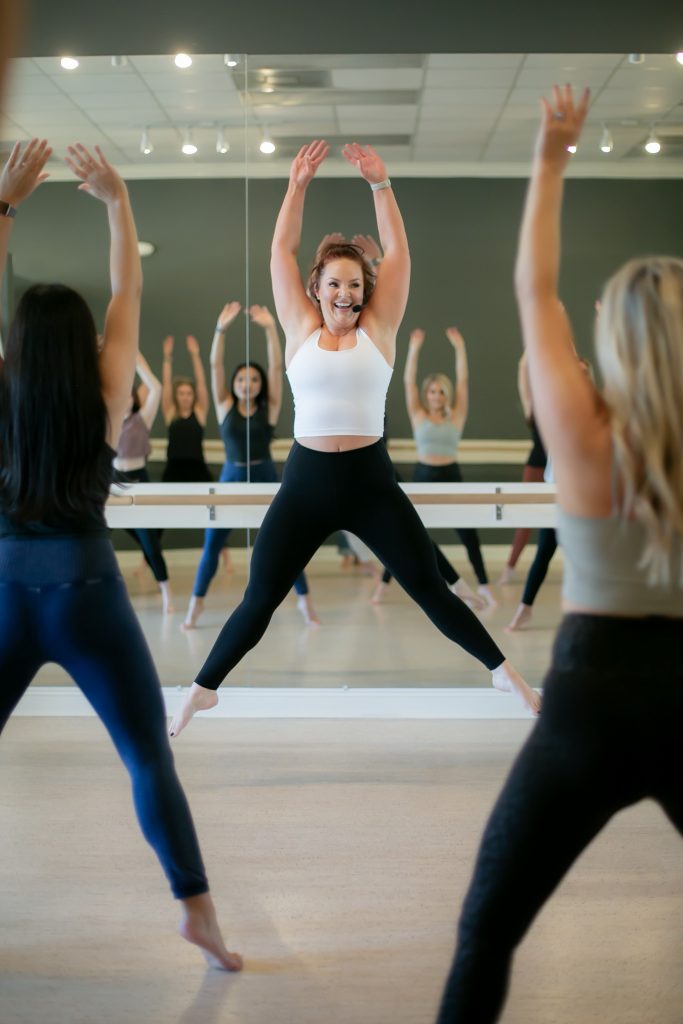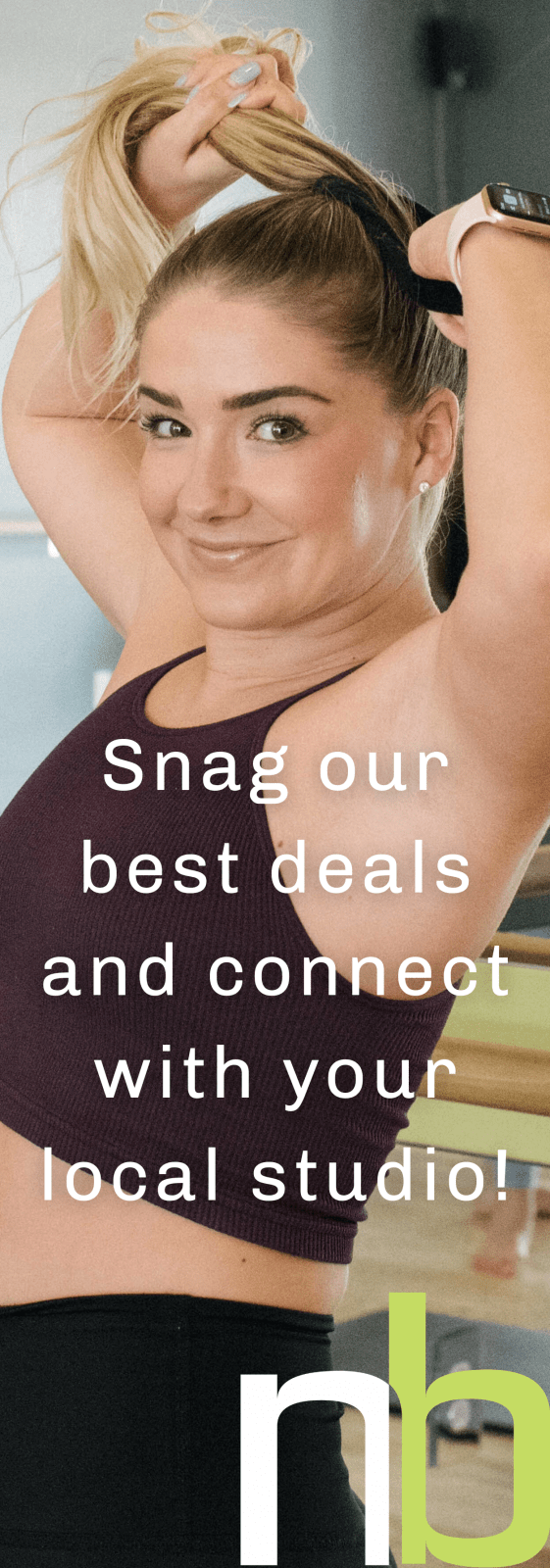6 Mistakes You’re Probably Making in Class
By now, you’ve likely heard all the benefits of barre classes.
But NEIGHBORHOOD barre is not your average barre class. Our method was created with you in mind. We are committed to creating results driven classes that are fun, inviting, and truly change your body and your body image. We provide a dynamic and complete workout regimen to include strength, toning, stretch and cardio training under one roof.
One of the best benefits of our barre formats is the development of the mind-body connection, resulting in increased body awareness, improved form and renewed confidence. Even if you’re brand new to barre or have rarely exercised, barre is a workout accessible to all. The positions may take time to learn and be challenging to master, but they are not impossible.
To truly see and maintain results, form is paramount to personal success. And even though our barre classes are accessible for any level of fitness, mastering the fundamentals and focusing on form, isolating the proper muscle group, and nurturing your mind-body connection are the key takeaways for success.
When your form is off, the workout can also be less efficient and even more injury-prone, so you may not get your desired results. Plus, this effect can carry over into your daily life activities, improving your posture and helping you achieve a healthy, capable and strong body.
To reap the full benefits of barre, you want to ensure you’re avoiding these common mistakes.

1. Gripping, or “white knuckling,” the barre during standing exercises. The barre is just a prop – no different than a ball, hand weight or resistance tube at the studio. It’s there to aid with your balance, but you should be able to do that with 2 fingers, not fist-fulls. Typically when we over-compensate our grip, we’re using our arms, shoulders, neck or even back. This creates unnecessary tension, allows the work to migrate out of the target zone, and can even make us more prone to injury.
How to fix it: Think if you only had your pointer and middle finger to use…how much lighter your grip would be. It would truly be there as a ‘back-up’ and not the primary source of holding you up, or to ultimately ‘cheat’ the exercise. Loosen your touch, and focus on engaging your core and isolating the target muscle for that exercise. This will allow you to achieve true isometric contractions and create greater tension in the quads or glutes, where we want it!
2. Relying on equipment to create the resistance. We absolutely love the challenge additional equipment, like ankle weights, bands and balls provide in class. It can not only help you increase the intensity of your workout, at times it’s a great support and aid to align your body and improve your form (like using the ball at your knees or behind your back in abs!). But sometimes it can distract us from fully utilizing our own body’s capabilities to master the move. You should be able to press out, or squeeze in, and still feel the target muscle contract and ultimately fatigue, without having to physically use a prop to create the motion. This is where the magic of the mind-body connection really comes in. Knowing your own body’s cues can help you realize when you might be over-relying on a prop in class, versus it feeling just as difficult (if not more so!) without it.
How to fix it: Focus on your opposing point of resistance. For example when in a Diamond shape for a thigh set, if the cue is to press out, you should think about holding your abs strong, and pushing your big toes firm into the floor. If the motion is essentially to press back, your hips are slightly tucked forward to reinforce your abdominal wall, and your feet are rooted into the floor for greater stability. Now, add the band and it’s like adding a little extra reinforcement to resist against, bonus!

3. Pushing your abs out during core work. During an ab-focused workout, especially when you’re crunching, or contracting forward (i.e. any motion where your fingertips are reaching), people tend to push the abdominal wall out instead of drawing it in. Sometimes, especially when tired, instead of feeling like the abs are pressing down, it feels like they’re pushing up a bit. This can even look like a cone-shape, like the ab are drawing upwards in the center of your abdominal wall. Typically we’re moving much larger than we actually need to, to exercise the abs. Visually, it should look like you’re shortening your abdominal wall, or in essence reducing the space between your rib cage and pelvic bones. Visually what we see instead is an ‘up and down’ motion. Your shoulder blades should not be constantly tapping the mat; they should stay slightly lifted the entire time, truly only moving 1 – 2 inches to create the contraction.
How to fix it: Instead in ab exercises, you want to exhale and draw your navel to your spine as you contract the abs. Check yourself by simply looking down at your belly and observing.
Remember that it’s about finding strength in your core, especially the transverse abdominis -those deepest core muscles.
4. Skipping out on the stretch time. Stretching increments may be incorporated throughout the workout or kept until the end of class, depending on which class format you take. Typically there’s always a stretching segment that goes much deeper at the end, and you should stick around for it. Not only does it help to lengthen your muscles after they’ve been tightly contracted in our micro-movements during barre, it moves the lactic acid through your body to help reduce soreness and improve recovery the next day. Stretching is also a mental workout that allows you to either warm up or decompress and focus on your body as a whole.
How to fix it: Hang in there until the end! We both know you likely won’t ‘stretch at home’ like you tell yourself you will later (no judgement, we don’t either and we’re professionals!). Plus, if getting strong and sculpted is your goal, then you should know that the more flexible you are the deeper you will be able to get in barre moves and positions, which will only multiply your results.
5. You’re holding your breath. When working out, we tend to either hold our breath or take short, repetitive inhales when things get challenging. But this can increase the risk of injury, decrease your endurance, and ultimately weaken the effectiveness of your workout. Biologically speaking, it also elevates your blood pressure, reduces oxygen to the circulatory system for working muscles, and increases anxiety. Sometimes when we are struggling to finish a set, we get the urge to hold our breath to get an extra push. Avoid that temptation! Instead, breathe continuously.
How to fix it: ‘Belly breathing’ is best. This is where you breathe in, filling the belly then the chest, and completely exhale. Think about breathing in through your nose and audible exhales from your mouth. Use your breath as a tool to help further engage your muscles, stabilize your body and improve endurance. Focus on deep breathing, especially in the most intense moments, and it will boost your energy and help you push further. Listen to your instructor’s cues throughout the workout, and you’ll start to pick up on habits like exhaling through the hardest part of your abs moves or going deeper into a stretch.

6. Thinking barre is not a cardio workout. It may look easy, but we kid you not, barre will challenge you physically and mentally. Our bread in butter is our dynamic, classic barre class (barre50/30) that is high-rep, lower weight focused to fully exhaust your muscles. When your body reaches that point of fatigue, it’s working in overdrive to complete the exercise. This elevates your heart rate and pumps more blood into the muscle for repair. Then there’s the more ‘intermediate’ level classes we offer, barreSTRENGTH and barreHIIT, which is specifically designed to challenge your cardiovascular system and muscle strength. The intensity of each nb workout will drive your body to shake and burn calories throughout the class as well as for several hours after. Our exercises build stamina and burn calories.
How to fix it: Many people think they need to be drenched in sweat, or completely out of breath, to get in a cardio-based workout. .Barre workouts don’t always have the same intensity as other exercises, but from a cardiovascular and calorie-burn perspective, we can guarantee you the same results (if not better from a muscular and stamina-based . Remember the ultimate goal is avoiding plateau. You’re better able to do this when you safely, but continually, increase your personal fitness challenges. This could look like adding/increasing equipment use, or adding a STRENGTH/HIIT class to your weekly barre routine. Remember, modifications are always available, and encouraged, to ensure each class is individually approachable!


